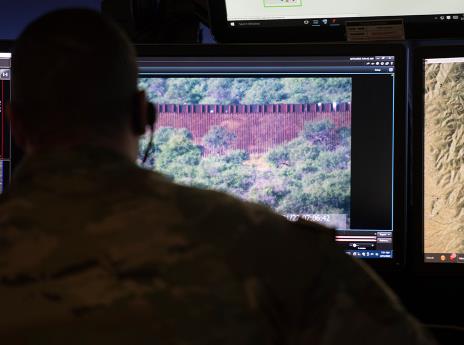
From the moment a person starts their migration journey, technologies are keeping track of their every move, especially at the borders.
“In an era where digital technologies are increasingly integrated into migration processes, these technologies are reshaping the very fabric of governance and impacting the human rights of migrants and refugees and communities worldwide,” said Peggy Hicks, Director, Thematic Engagement, Special Procedures and Right to Development Division at the UN Human Rights Office, during the launch of a new UN Human Rights study that was produced in partnership with the University of Essex on digital border governance.
Technologies can be used for good by providing migrants with the ability to stay connected to their families and communities and to make complaints on chronicle abuses. But, as the study revealed, technologies can also present harmful human rights risks during the migration processes without having real safeguards put in place.
“What we need is to create transparency about how governments rely on new technologies in border management; to identify the risks for human rights violations; and to create a strong and efficient accountability framework that is able to keep pace with technological progress,” said Christine Löw, Deputy Head, Peace and Human Rights Division from the Swiss Federal Department of Foreign Affairs.
The study, launched during the 54th session of the Human Rights Council, was informed by interviews with over 70 experts working in the fields of human rights, refugee protection, digital technologies, migration, and border governance during expert discussions and interviews conducted from March to October 2022 and an event at the Human Rights Council in September 2022.
Control and harm
The study points to multiple harms linked to the use of digital technologies in the management of border, such as biometric recognition tools and massive interoperable databases, often linking information across government sectors and deployed in insecure ways.
Hicks highlighted the study’s findings on the use of automated visa applications and the unrestricted use of algorithms that can lead to unlawful profiling, perpetuating harmful stereotypes, racism, and discrimination.
According to the study, emotion detection systems that claim to detect thoughts, feelings and intent are being increasingly used to justify migration decisions, which are likely to result in biased, stereotypes and discriminatory practices and can infringe on a person’s freedom of thought and expression.
International borders are increasingly securitised and even militarised, with many countries constructing expansive infrastructures to prevent migration. Drones and automated recognition tools are also used to detect movement on extended border areas, which have been reported to be used to stop migrants from arriving at the border and enabling pushbacks.
“Where surveillance prioritizes control rather than life-saving assistance, we will see that less direct and more dangerous migration routes may emerge as a result,” she said. “Borders continue to be sites of human rights violations and abuses, rather than offering sanctuary, dignity and human rights protection people on the move are entitled to.”
As a result, people on the move are being put at risk of discrimination and harm, with little accountability and means of redress, according to Hicks.
“By taking a human rights-based approach to the use of digital technologies at borders, States and other relevant stakeholders can avoid creating or exacerbating human rights harms for people on the move,” she said.
The study includes recommendations to protect migrants including to ensure digital technologies are necessary and legal before they are used; refrain from using those technologies that are fundamentally at odds with human rights; and harness the positive impacts that digital technologies can bring to human rights-based border governance.
Lorna McGregor, principal investigator and professor of international human rights law and Director of the Human Rights, Big Data and Technology Project at the University of Essex, said that it’s critical to conduct a stocktaking and human rights assessment of technologies that are already in use, to ensure regular reviews of these technologies, undertaken by independent bodies and experts competent in both technologies and human rights, and to refrain from using those that raise serious concerns to avoid human rights harm.
This is the way these technologies can create opportunities for migration, Hicks added.
“As we grapple with these evolving dynamics, it is crucial to address the potential harms posed by digital technologies on human rights, while also harnessing the many opportunities they may offer to facilitate safe and dignified migration to benefit the lives of millions of people on the move,” she said.












